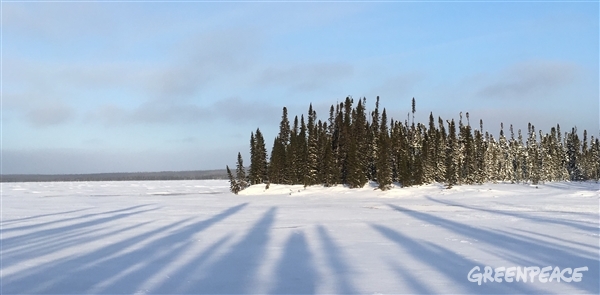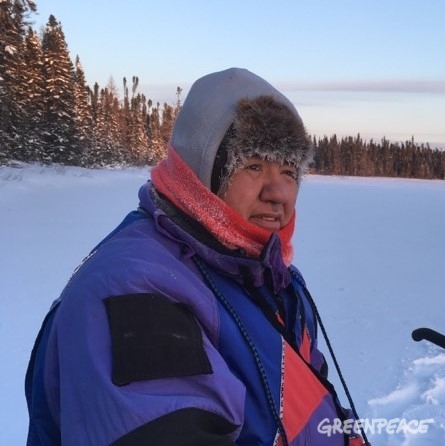Imagine the 8 hours you spend at work, in school, or scrolling through Facebook. Now imagine spending those 8 hours on a skidoo at -37 degrees (and more like -50 with wind chill factor), riding through the dark forest on a bumpy road. That’s how long it took us to reach the Broadback.

Just arrived in the Broadback!
During the winter months, the only way to travel to certain Indigenous territories in the Boreal Forest is by skidoo. While certain parts are accessible via the thousands of forestry roads that cut across the forest and are used by the logging industry, in areas that remain unlogged, no such roads exist.
Don Saganash, whose land we are visiting, wants to keep it that way.
Don joked that around town he’s also known as “The Last Man Standing.” He is proud that he took a stand and decided his land was not for sale. Since then, he’s been working to stop industrial logging on his territory and to protect the last 10% of Waswanipi’s territory (Eeyou Istchee) that has never been logged.

Don Saganash
And if you’re wondering: protecting your heritage and driving a skidoo is not incompatible.
Years ago, Don’s father impressed on him the importance of remaining true to their heritage but to embrace and use whatever modern technology permits them to preserve their traditional way of life. Skidoos are efficient and the safest, fastest way to travel in the winter. They allow regular visits to their lands during the cold months, bringing back moose to feed the elders, some who can no longer make the arduous trip themselves.
It is hard to describe the feeling you get when you set foot in an intact forest.. A forest that has never been subject to industrial interference. It simply takes your breath away. Not a road, not a clearcut, not a mine, not a power line, not a pipeline in sight… a forest in its natural state. Calving grounds for the threatened Woodland caribou and the last refuge of several other endangered species including the wolverine, marten and bald eagle, the Broadback Valley is a haven. The question is, for how much longer?
During the several days of our expedition into the Broadback, the stories of the elders, the Tallymen and the Cree trappers had one thing in common: the ever growing number of logging roads threaten the Cree’s way of life. The roads cut through the forest, disturbing the fragile ecosystem. Unsustainable industrial logging threatens traditional hunting, trapping and fishing – nothing remains undisturbed. Over the years, The Cree have noted that logging activity has slowly but surely driven out American marten, the wolverine, the fisher and the threatened woodland caribou from their land. Every year, there are fewer tracks. Every year, the big logging trucks are moving closer. The Cree know that soon the damages to the forest will be too great. They live here, they see the changes.
It’s time to Save the Broadback.
Related articles:
Behind the Scenes: Visiting the Cree Nation of Waswanipi during the polar vortex
